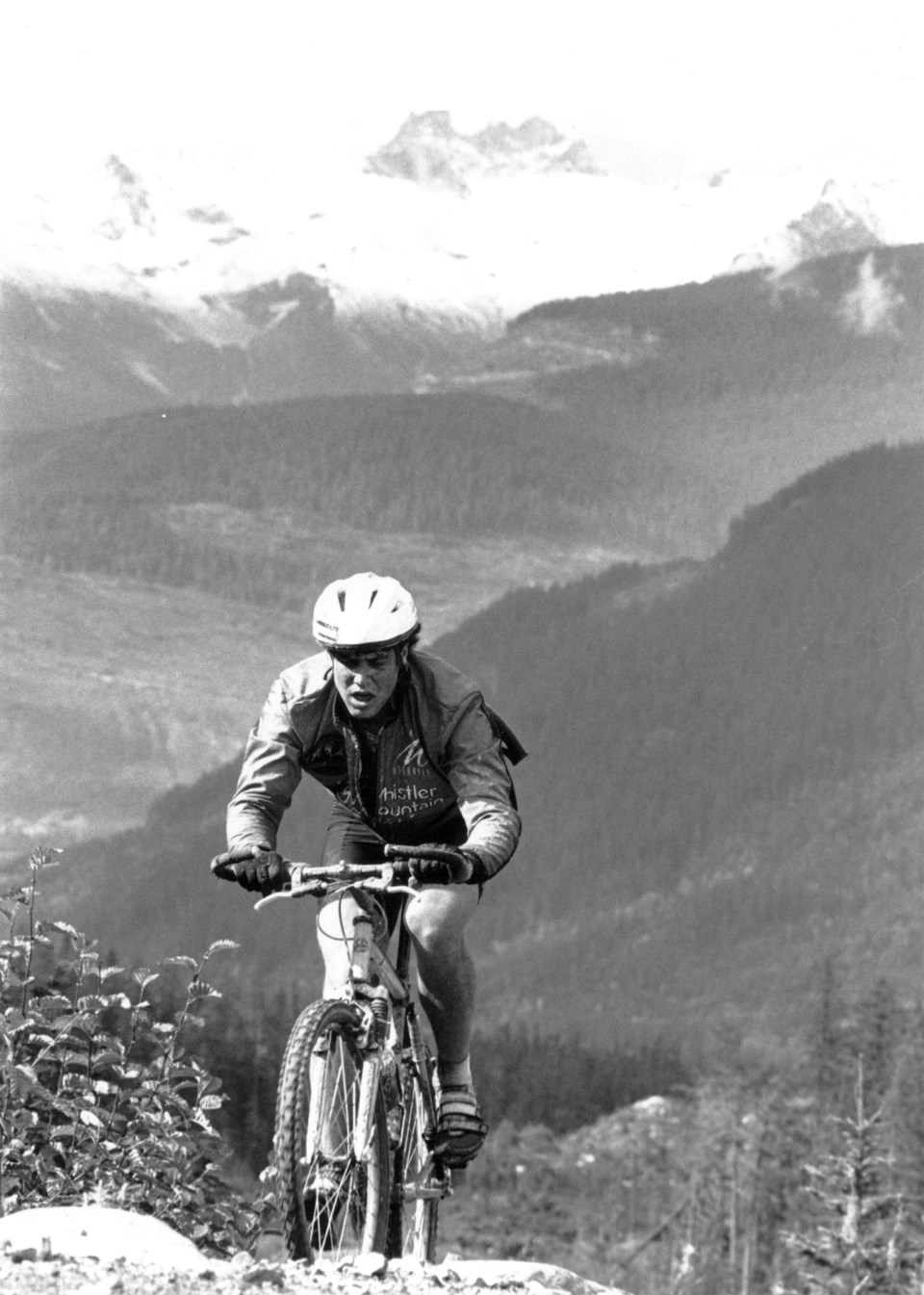Summers in Whistler may be known for mountain biking today, but in the 1980s the sport was still young and Whistler was in the process of building its reputation as a site for races and events.
Whistler’s first recorded mountain bike race was held on June 20, 1982 and was organized by Jon Kirk. The race had few rules and lots of confusion. According to Jacob Heilbron, who came in third, the race may have been called the Canadian Championship, but with no governing body for mountain bike racing in Canada until 1984 it would not have been officially sanctioned. The course began with a literal running start and some competitors switched between mountain and road bikes throughout the course.
By the mid-1980s, some of the events held in Whistler looked a little different from that first race. In 1985, Whistler hosted the BMX World Championships, which brought 680 riders from 14 different countries to the resort, which was still finding its way out of a recession. Unlike the earlier Canadian Championship, this race was associated with the International BMX Federation. Whistler also hosted the 1986 North American BMX Championships and CanAm Freestyle BMX Challenge, but the Whistler Question reported that the races were hampered by wet weather and poor turnout.
The CanAm Mountain Bike Challenge, which was hosted on Whistler Mountain on July 5 and 6, 1986, did not have the same challenges. More than 70 racers entered the mountain race on the Saturday and the valley criterium race on the Sunday, with sunny but not hot conditions for both.
The mountain course followed an access road up to the Roundhouse (a climb of 1,200 metres over seven kilometres) and then descended back to the valley. While those competing in the expert category completed the same course as the pro racers, those in the “sportsmen” category cycled only as far as midstation and then rode the Red Chair up to the top. The 40-km criterium course took competitors on laps around the Lost Lake trail system.
Competitors appear to have enjoyed the Whistler Mountain course, comparing it favourably to the course in Crested Butte, Colo. Jeff Norman, who raced for the Schwinn team, described it as “smoother,” while Tod Switzer of Ross Bicycles told the Question, “It’s much faster. Crested Butte is rocky and rutted. It’s definitely better here. I had a lot more fun.” Racers also commented on how their tires could hang on to the soil during the climb. One racer, upon crossing the finish line, even jumped off his bike to exclaim “I like it, I like it, I like it!”
By the end of the weekend, American teams for manufacturers such as Ross, Schwinn, and Fisher had dominated the pro categories, taking home the cash prizes on offer. Despite this, Whistler riders were well represented in the expert and sportsmen categories. Merve Stalkie took first place in the expert category of the mountain race, followed closely by Paul Rawlinson, also of Whistler. Whistler rider Sharon Bishop came fifth in the women’s category and Eric Gunderson of Whistler took first in the sportsmen category.
The CanAm Mountain Bike Challenge marked the end of Whistler’s “Fat Tire Week,” which had begun with the BMX Championships. At the closing ceremony, president of the National Off Road Bicycle Association Glen O’Dell challenged Canadian racers to do better. O’Dell also hinted at Whistler’s future, referring to Whistler as “a mecca for the new sport.”




